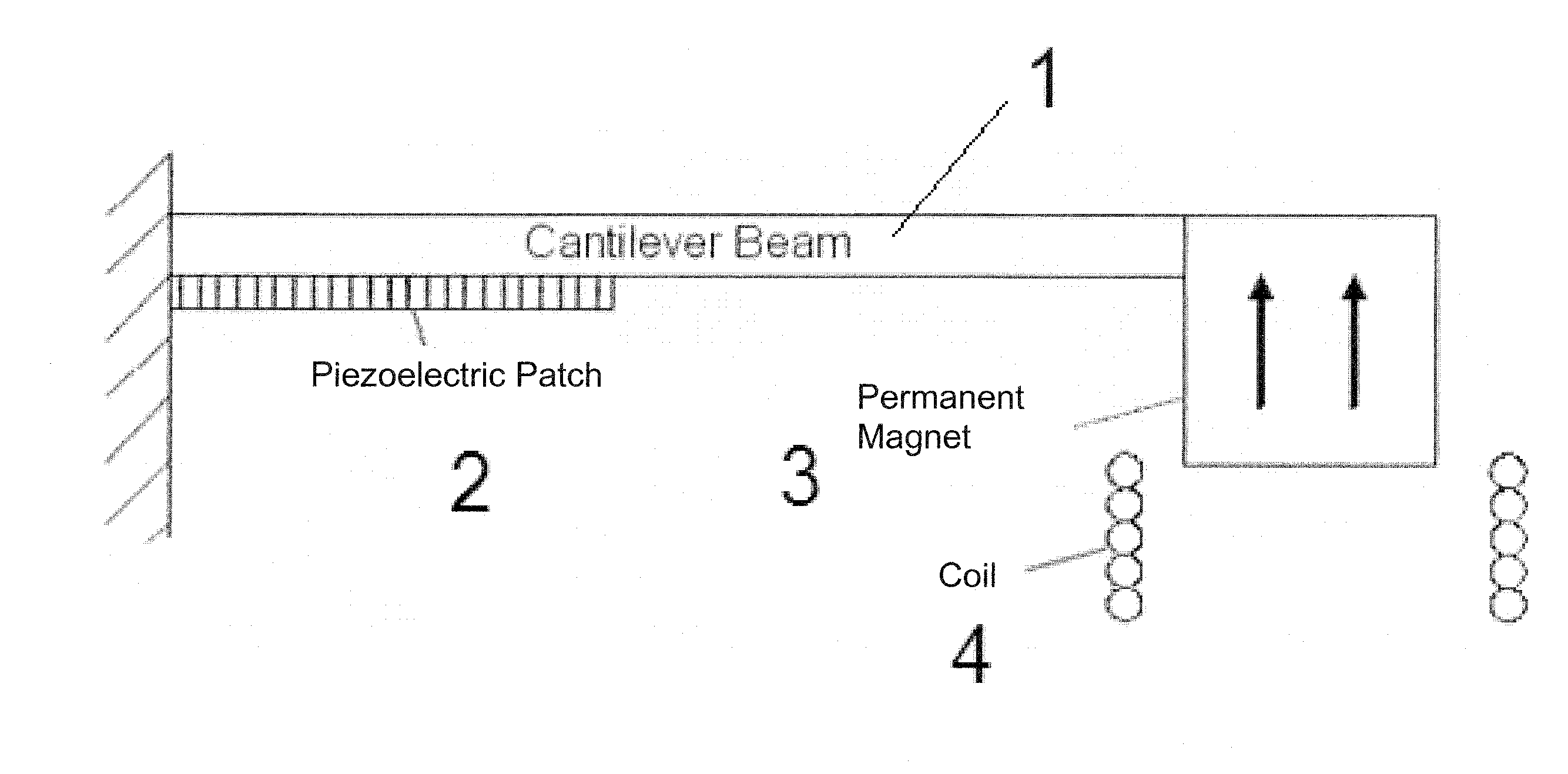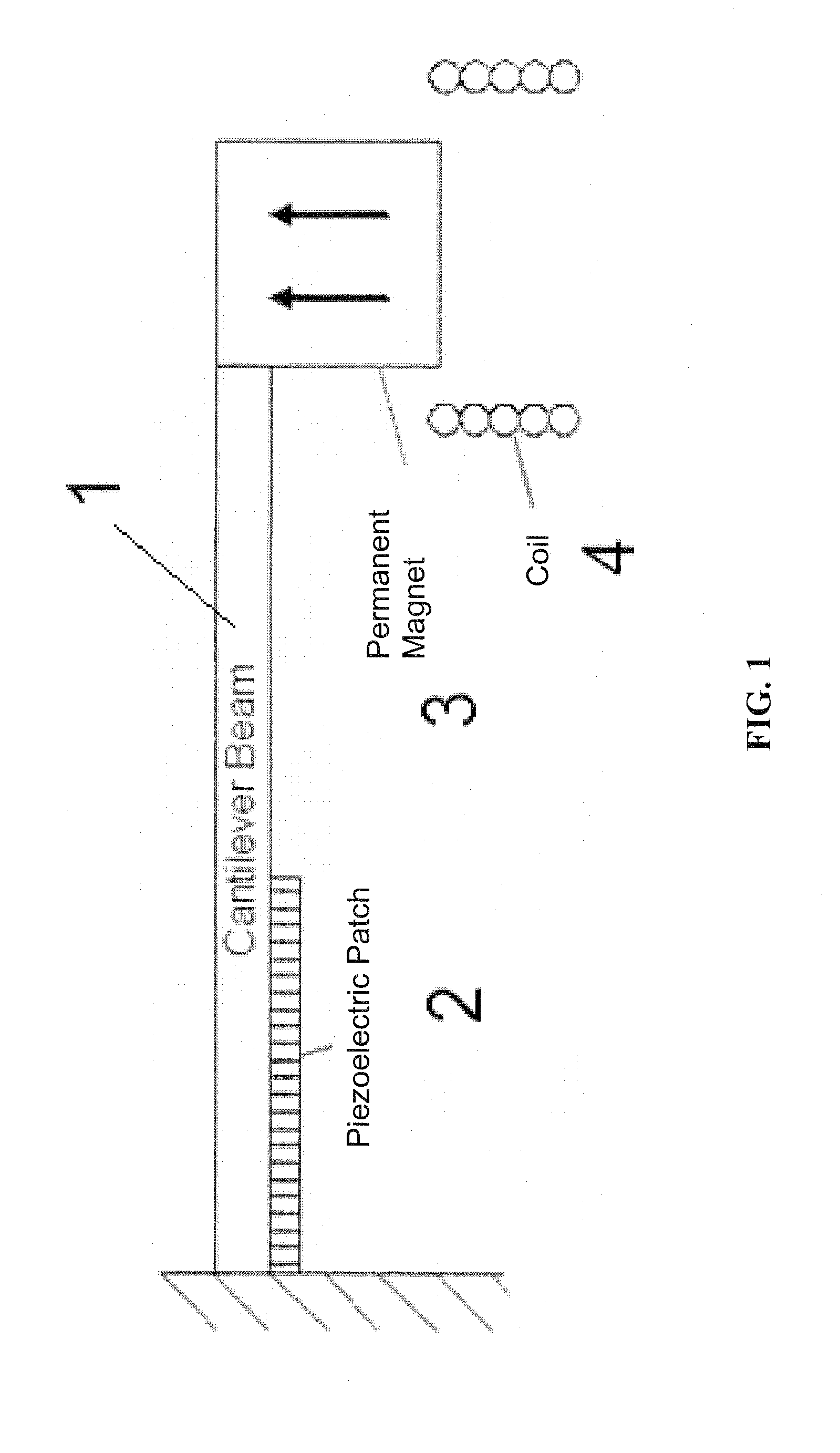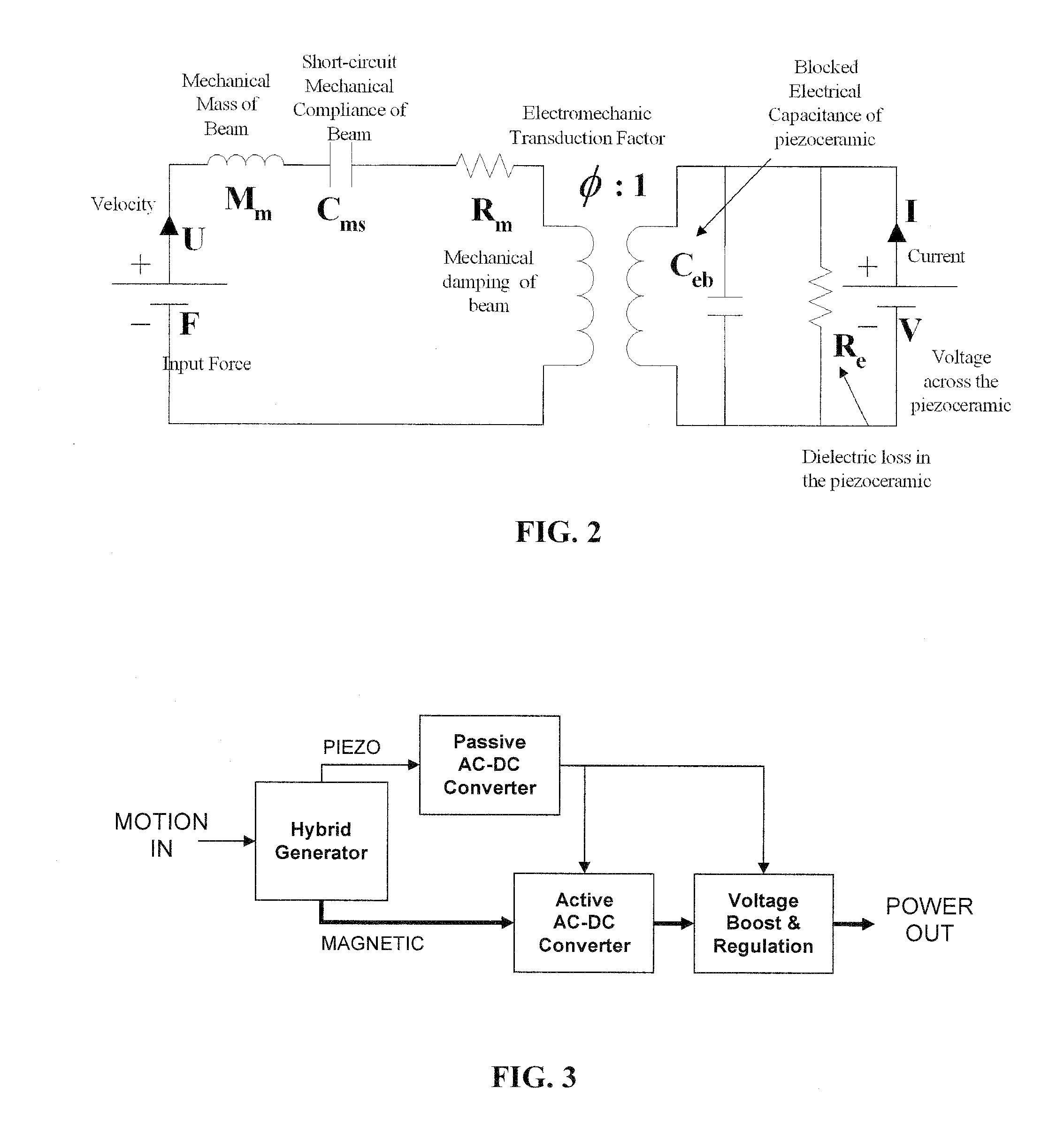Dual-Mode Piezoelectric/Magnetic Vibrational Energy Harvester
a piezoelectric and magnetic vibration technology, applied in the direction of generators/motors, mechanical equipment, machines/engines, etc., can solve the problems of poor battery energy efficiency, disproportionate amounts of hazardous waste, and harmful environmental impacts and product safety issues, so as to reduce the dependence on grid-supplied electricity, improve the overall electrical efficiency of the device power system, and reduce the effect of hazardous was
- Summary
- Abstract
- Description
- Claims
- Application Information
AI Technical Summary
Benefits of technology
Problems solved by technology
Method used
Image
Examples
Embodiment Construction
[0020]Embodiments of the present invention pertain to compact power sources for sensors, portable electronics, and battery-operated devices. Embodiments provide a dual-mode magnetic / piezoelectric energy harvesting structure. In an embodiment, an integrated structure is provided that may achieve a high power density. In addition, system level enhancements involving complementary voltage / current levels and impedances may be incorporated.
[0021]Embodiments of the present invention provide an energy harvesting structure that uses both piezoelectric and magnetic transduction schemes simultaneously. A specific embodiment of a vibrational energy harvester in accordance with the subject invention incorporates a body and a proof mass connected to the body via a flexible member. The proof mass moves with respect to the body via bending of the flexible member when the body is moved. A piezoelectric patch is attached to the flexible member such that the piezoelectric patch creates a voltage when...
PUM
 Login to View More
Login to View More Abstract
Description
Claims
Application Information
 Login to View More
Login to View More - R&D
- Intellectual Property
- Life Sciences
- Materials
- Tech Scout
- Unparalleled Data Quality
- Higher Quality Content
- 60% Fewer Hallucinations
Browse by: Latest US Patents, China's latest patents, Technical Efficacy Thesaurus, Application Domain, Technology Topic, Popular Technical Reports.
© 2025 PatSnap. All rights reserved.Legal|Privacy policy|Modern Slavery Act Transparency Statement|Sitemap|About US| Contact US: help@patsnap.com



